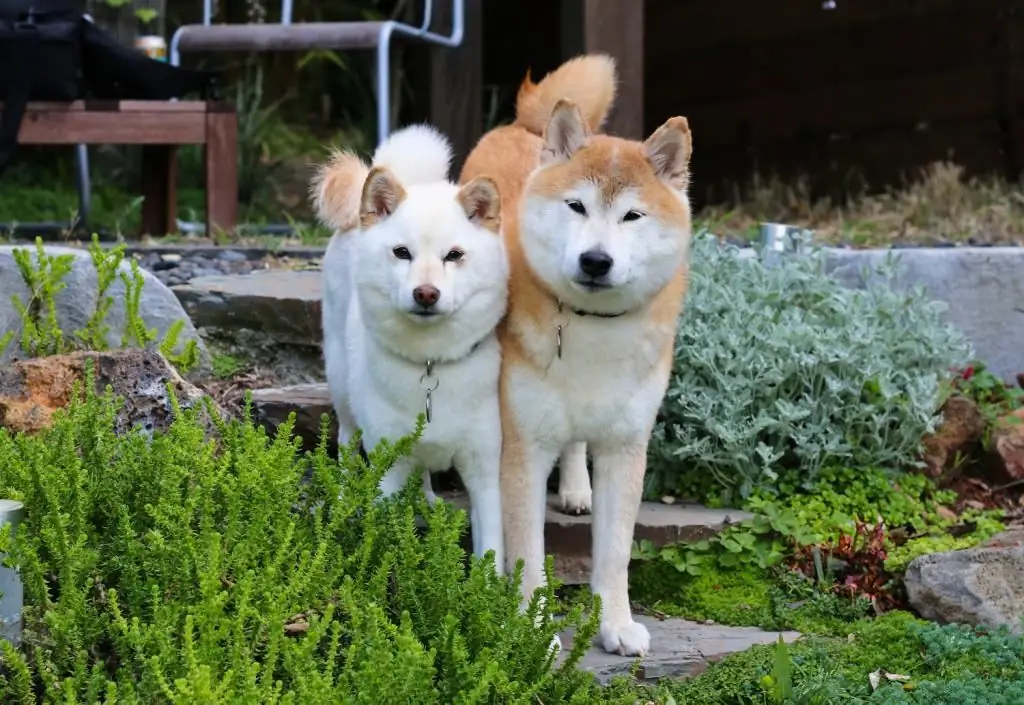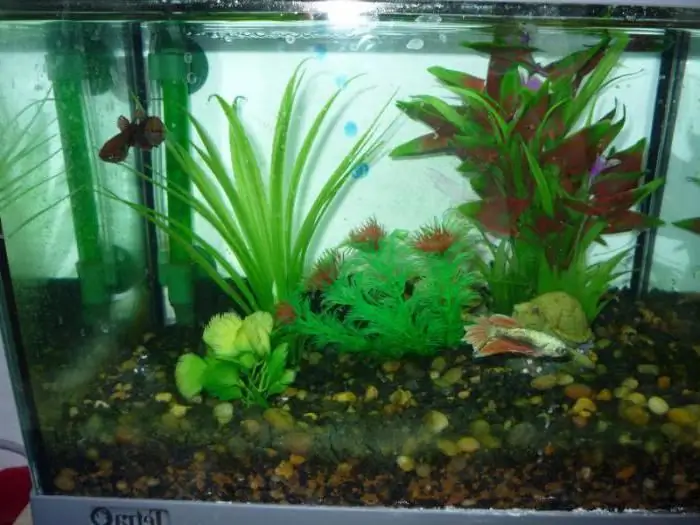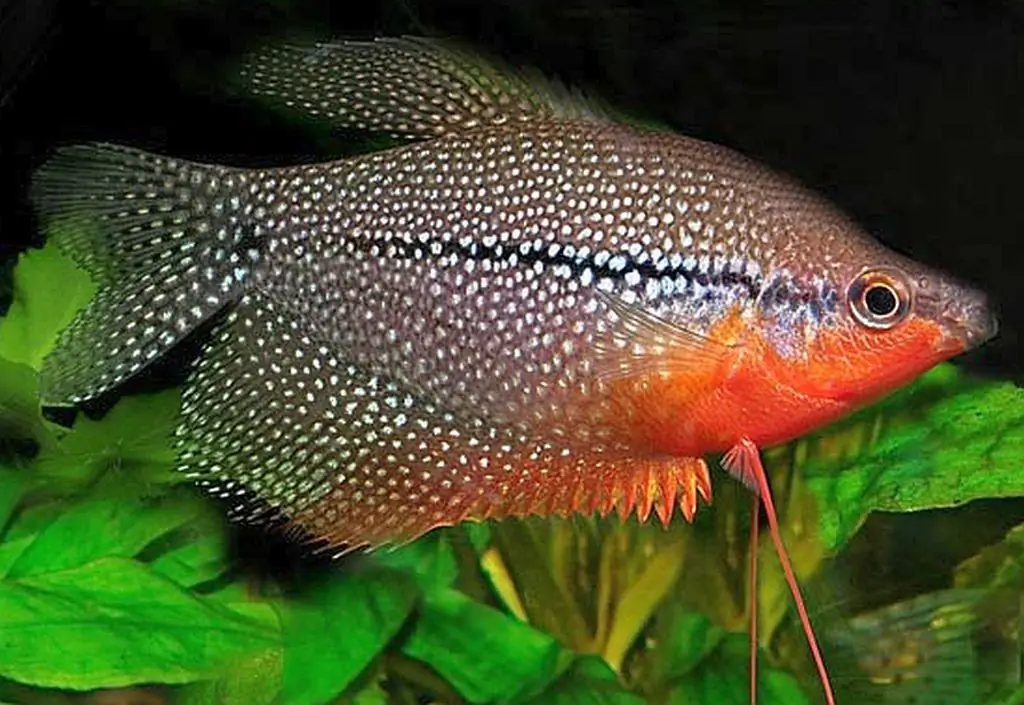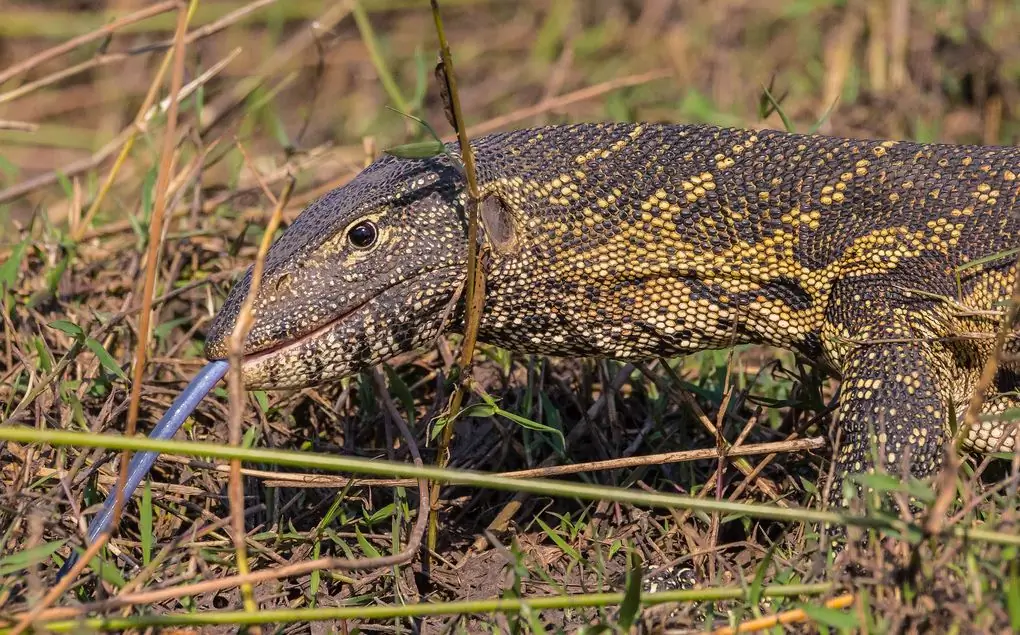2026 Author: Priscilla Miln | [email protected]. Last modified: 2025-01-22 17:55:26
Shubunkin fish is a bright and beautiful representative of the Karasev family. This inhabitant of a domestic reservoir is absolutely unpretentious and very hardy. Shubunkins are goldfish. Even a novice aquarist can handle them. In the article, we will consider in detail the conditions for keeping and breeding this fish, as well as its compatibility with other individuals.
General characteristics
Shubunkin fish, or calico is not found in the wild. It was bred artificially in the selection process. This breed of goldfish was created in Japan in 1900. In Europe, shubunkins have only been kept in aquariums since the 1920s.
Almost all breeders note the beautiful, bright coloring and unpretentiousness of Shubunkins. The description of the fish can be found in many aquarium manuals. It is reported in the literature that shubunkins grow up to 15 cm. However, calicos reach such dimensions only under good conditions and in a properly selected aquarium. In a cramped tank, fish can only grow up to 10 cm. In Japan, Shubunkin are bred in artificial ponds, in such a spacious habitat, their body length reaches 20 cm.
Appearance
Colorful spots scattered over the body are a distinctive feature of this breed of goldfish. Shubunkins have a wide variety of colors. Specks can be yellow, blue, white, red or black. Individuals with spots of blue and purple hue are especially valued. Because of the bright and colorful body, Shubunkins are called chintz comets. The final color of the spots is formed only by 3 years.

Most goldfish have a round body shape. Shubunkin is somewhat different in appearance from his relatives. Its body is elongated, oblong and slightly compressed laterally. The fins are large and large, and the tail is forked. Unlike most goldfish, calicos have very thin and transparent scales that are almost invisible.
Shubunkin fish reach maturity at about 2 - 3 years. Their life span is about 10 - 15 years. However, there have been cases when fish lived for 20 years or more. Such longevity is quite possible with comfortable conditions of detention and good care.
Gender differences
Male and female Shubunkin are very difficult to distinguish from each other. Male and female fish have the same appearance. Sexual differences become noticeable only during spawning. During this period, convex white spots appear on the male's head and gills. The body of the female is rounded due to the gestation of eggs. outsidespawning, it is almost impossible to determine the sex of Shubunkin.

Aquarium keeping
Let's consider the features of the maintenance of shubunkins. Fish of this breed are quite unpretentious, but space is very important for them. Crowding adversely affects their growth and development. In order for Calico to feel comfortable, the following conditions must be created for them:
- Space in the aquarium. Shubunkins are quite mobile, so they need a lot of space. The volume of the aquarium for their maintenance should be at least 100 liters. When choosing it, preference should be given to rectangular tanks. In round aquariums, the fish see poorly and grow worse.
- Good water filtration and aeration. Buy a powerful filter from an aquarium store. Shubunkins love to dig in the ground and often create a lot of turbidity in the water. You need to take care of buying a quality aerator. Calico are unpretentious and very hardy, but they do not tolerate the lack of oxygen.
- Lack of heat and clean water. Shubunkins are considered cold-loving fish. They do not do well in excessively warm conditions. The optimum temperature in the aquarium for fish should be from +20 to +23 degrees. Calicos are not very sensitive to the purity of the liquid. However, it is recommended to change the water in the tank by 1/5 part weekly.
- Safety of the soil and design elements. Calico can swallow small stones. These grains get stuck in their stomach and lead to the death of the fish. To eliminate such a danger, as soilonly coarse gravel or sand can be used. Do not put sharp snags in the aquarium, this can cause injury to the fins.
- Lots of strong plants. Shubunkin fish loves to live near the ground and dig up the roots of algae. At the same time, calicos feel comfortable in a well-landscaped aquarium. Therefore, you need to plant a large number of aquatic plants with strong leaves and roots.
- Natural light. Shubunkins love natural sunlight, so it is best to place the aquarium on a windowsill. It is very important to ensure that the water does not overheat, as the heat is detrimental to the calico. Natural light can be replaced with artificial, but the lamp must be bright enough and burn for about 8 - 12 hours a day.

Food
Calico goldfish are very voracious, but almost omnivorous. Shubunkin nutrition should be complete, but overeating should never be allowed. Excessively abundant food leads to obesity, which significantly shortens the life of goldfish. Therefore, the insatiability of Shubunkins must be limited. The volume of the daily ration should be approximately equal to 3% of the weight of the fish.
As the main food, it is best to use special ready-made food designed for cold-loving and goldfish:
- Tetra Animin Goldfish Colour.
- Sera Goldy Gran.
- Sera Goldy Nature.

These types of food are produced inin the form of flakes and granules that sink to the bottom of the aquarium. This is especially convenient, since shubunkins often dig in the ground. Ready-made dry food should be given to fish in small quantities, as an abundance of such food can provoke digestive problems.
You should not limit your diet to just prepared foods. The fish menu should be diversified with live food, for example, bloodworms, earthworms, tubifex. Shubunkins eat greens with pleasure. They can be given fresh lettuce or cabbage.
Calico fish should be fed twice a day - morning and evening. It is necessary to ensure that within 10 - 20 minutes all the food has been eaten. If there is some food left, it must be removed from the aquarium immediately. While eating food, shubunkins heavily pollute the water, as they like to get food from the ground.
Compatibility
Shubunkin prefers to live in a pack. This fish does not like being alone. Therefore, 4 - 6 individuals should be immediately launched into the aquarium.
Calico is quite a peaceful fish with a calm character. It should not be kept together with aggressive aquarium inhabitants. The following types of fish are not suitable as neighbors for shubunkins:
- barbs;
- scalars;
- roosters;
- zebrafish.
Such types of fish can nibble on the long and lush fins of shubunkins. Bottom catfish should not be kept together with calico. Both fish love to spend time near the ground and may perceive each other as competitors.
Together with calico, you should not keep fry and small fish species. The Shubunkins might mistake them for food and swallow them.
Ideal neighbors for Calico are other breeds of goldfish and koi. These aquarium inhabitants also love cool water.

Reproduction
Shubunkins are spawning fish species. It is quite possible to breed them in a home aquarium. Their spawning period begins in the spring. Before breeding, fish need to be deposited in a tank with a volume of 30 - 50 liters. The water in the spawning ground should be warmer than in a regular aquarium by 3 - 5 degrees. Care must be taken to keep the tank clean and maintain bright lighting.
The beginning of the breeding season is indicated by the rapid movements of the males around the females. Shubunkins lay eggs on algae. At one time, the female lays about 10,000 eggs.

Calico fry are recommended to be fed mainly with live food (rotifers, brine shrimp). With good nutrition, small fish grow twice in the first 2 months of life. It is important to remember that Shubunkin fry often have uneven growth. Fish can have different sizes at the same age. It is recommended to separate larger individuals from smaller ones to avoid injury and accidental ingestion.
Recommended:
Japanese Inu dog breeds. Akita Inu and Shiba Inu: description of breeds, differences, standard, content features

Japanese dogs Akita Inu and Shiba Inu are breeds popular with breeders and lovers of four-legged friends. The similarity of the two breeds often leads to the fact that people who do not have experience in dog breeding confuse them with each other. In fact, these are two completely different breeds of Japanese dogs: Akita Inu and Shiba Inu differ both in appearance and in character. We offer you to understand the features of the breeds of four-legged pets and understand which puppy is right for you
Aquarium fish algae eater: description, content features, care and reviews

Not all novice aquarists know that in addition to fish, snails, natural or artificial greenery and decorative ornaments, an algae-eating fish should settle in every underwater kingdom. About why the presence of these inhabitants is so necessary, we will try to tell in this article
Gourami: spawning, reproduction, description with photo, life cycle, characteristic features and content features

Gourami are extremely popular and easy to keep freshwater fish. Their reproduction is easy to achieve in captivity. For spawning, gourami fish make small nests. Consider the most popular types of gourami, features of their content, natural range, reproduction
Goldfish: varieties, content, care and reviews

Goldfish is one of the most common and well-known aquarium fish. Nowadays, it can be seen in any pet store. Today there are more than one hundred and twenty color variations and breeds of goldfish
Nile monitor lizard: habitat, photo and description, content features, care and nutrition

The monitor lizard family has a lot of representatives. One of them is the Nile monitor, widespread on the African continent. The impressive size and formidable appearance of the animal do not prevent it from being a pet for those people who love the exotic. Keeping a lizard in the walls of the house requires compliance with special conditions. It is this unusual animal that will be discussed in the article

